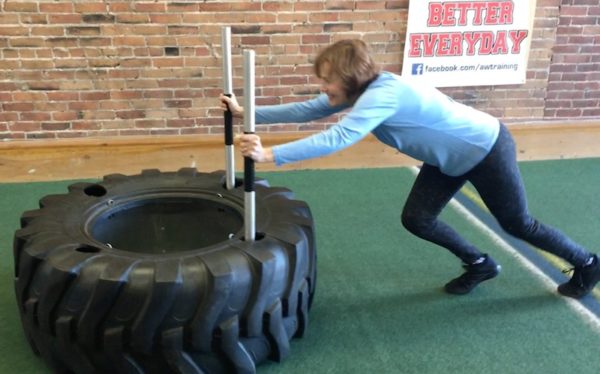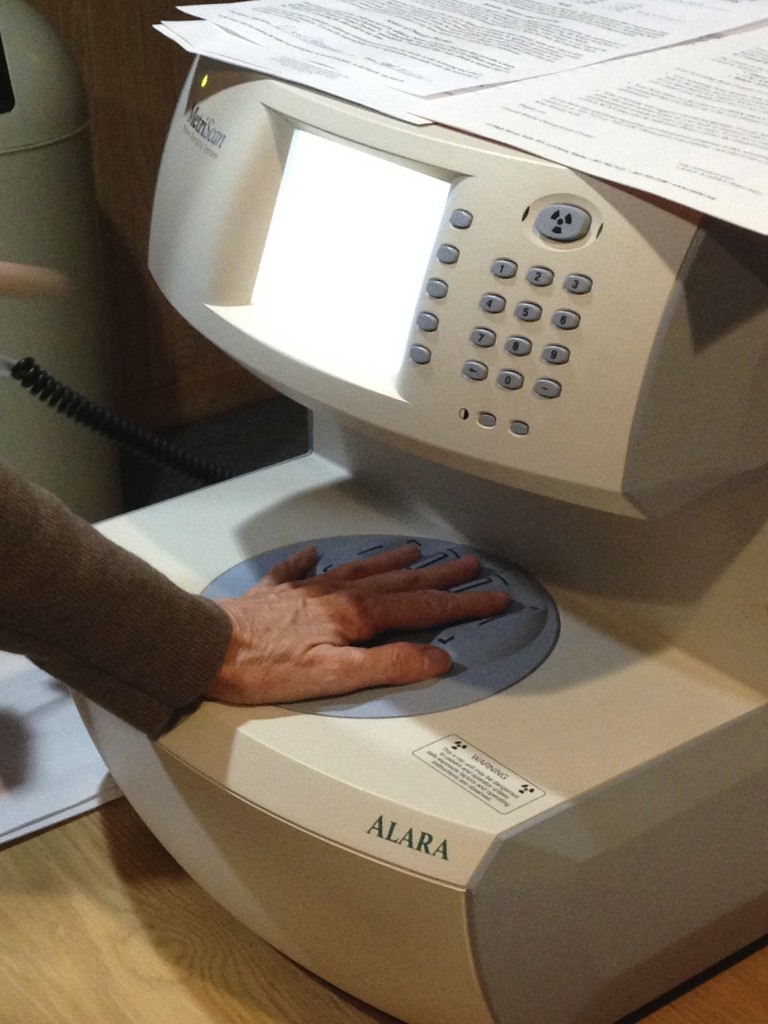If you’ve hit 50 and you’re a woman, chances are your bones have lost some strength over the years, which is yet another reason for staying as active as possible. Most people’s bones are as dense as they’ll ever be between the ages of 18 to 25. By the time you reach 35, density begins to gradually decrease until menopause. After menopause, bone loss happens more rapidly — as much as 20 percent in five to seven years.
Losing too much bone can lead to osteoporosis, which means bones are brittle and can break with little effort. If your bones are slightly less dense than normal, you may have what is called osteopenia.
You may be at risk of osteopenia or osteoporosis if you:
- are a women
- are postmenopausal or have low estrogen levels
- have a thin, small body frame
- are a man older than 70
- are Asian or Caucasian
- have a family history of osteoporosis
- have a history of broken bones
- take certain medications, such as steroids
- have certain diseases, such as rheumatoid arthritis, lupus, diabetes or a thyroid condition
- don’t get enough calcium and/or vitamin D
- smoke
- are inactive
- have more than three alcoholic drinks a day
- drink more than three cups of coffee a day
- are shorter than you used to be
Measuring bone density
If you happen to attend a health fair or a similar event, they may offer a general osteoporosis screening of the lower arm, wrist, fingers (see picture above), or heel. Such a screening might show that you have bone loss, but for more precise results, a DEXA (dual-energy x-ray absorptiometry) scan is recommended.
According to Dr. Lauren Adey, a surgeon at Central Maine Orthopaedics in Auburn, Maine, a DEXA scan uses low dose radiation to measure the amount of bone mass in the hip and spine and compares results to those of a healthy 30-year-old. The comparison, known as a T- score, gives a good idea of how much bone mass you may have lost over the years.
T-scores
.9 or above (0, .5, .9) = normal
.9 to -2.4 = osteopenia
-2.5 or lower = osteoporosis
Who should get a DEXA scan?
Unfortunately, says Dr. Adey, some people don’t find out they have osteoporosis until they break a bone, which is why it’s sometimes called the silent disease. The DEXA scan is currently considered the gold standard test for diagnosing osteopenia and osteoporosis.
The U.S. Preventive Services Task Force recommends DEXA scans for
- women over age 65
- postmenopausal women younger than 65 who are at increased risk of osteoporosis
Choosing Wisely, a project of the American Board of Internal Medicine (ABIM), also recommends that
- men over age 70 talk with their doctors about the risks and benefits of screening
- younger women and men ages 50 to 69 should consider the test if they have risk factors for serious bone loss.
Prevention
When we’re young, preventing osteoporosis is generally not top of mind — but it should be. Doing whatever you can to build and keep bones dense and strong can help you in the long run, and Dr. Adey says it’s never too late to start.
Bones need calcium
- Ninety percent of the calcium in your body is in your bones and teeth.
- Calcium needs to be ingested; the body can’t make it on its own.
- Women under age 50 and men under age 70 need 1000 mg a day.
- Women over age 50 and men over age 70 need 1200 mg a day.
- Calcium-rich foods include dairy products and fortified foods and drinks.
- To reach your daily amount, fill any gap with a calcium supplement, such as calcium carbonate or calcium citrate.
Vitamin D helps bones absorb the calcium
- People under age 50 need 400 to 800 IU a day.
- People over age 50 need 800 to 1000 IU a day.
- The best source of Vitamin D is sunlight, which is in short supply in the northern hemisphere and is blocked by wearing sunscreen (which is important to prevent skin cancer).
- You can get some Vitamin D in wild-caught mackerel, salmon and tuna and some fortified milk and orange juice.
- To reach your daily amount, fill the gap with a Vitamin D supplement. Most calcium supplements include Vitamin D.
Exercise helps build strong bones
Regular exercise is good for just about everything, including slowing bone loss and improving balance and flexibility, which can reduce your risk of falling. When you’re trying to prevent osteoporosis, the most important type of exercise is weight-bearing, which uses your own body weight to work against gravity. A brisk walk is weight-bearing; a brisk swim is not.
Examples of weight-bearing exercises
- Brisk walking
- Hiking
- Running
- Dancing
- Kickboxing
- Housework
- Yoga
- T’ai chi
- Pilates
- Golf
- Racquet sports
Treating osteoporosis
If you have a T-score of -2.5 or lower, your doctor may recommend treatment. Several medications are now on the market that either slow bone loss or build new bone. Some are taken daily and others weekly, monthly or once a year intravenously.
Because of the high risk of bone fractures, especially hip fractures, osteoporosis is a disease that needs to be taken seriously. But before rushing to take a medication, you need to consider your true risk, as well as understand the medication’s benefits and drawbacks.
If you’re concerned that you might be at risk, but you’re not sure what you should do start by having a conversation with your health care provider. Here’s some more advice from Choosing Wisely about the kinds of questions you should ask before making a decision about any medical test or procedure.
- Do I really need this test or procedure? Medical tests help you and your doctor or other health care provider decide how to treat a problem. And medical procedures help to actually treat it.
- What are the risks? Will there be side effects? What are the chances of getting results that aren’t accurate? Could that lead to more testing or another procedure?
- Are there simpler, safer options? Sometimes all you need to do is make lifestyle changes, such as eating healthier foods or exercising more.
- What happens if I don’t do anything? Ask if your condition might get worse — or better — if you don’t have the test or procedure right away.
- How much does it cost? Ask if there are less-expensive tests, treatments or procedures, what your insurance may cover, and about generic drugs instead of brand-name drugs.
My words of wisdom are that even if you’ve been sedentary for longer than you care to admit, start moving. Right now. No excuses.



Leave A Comment